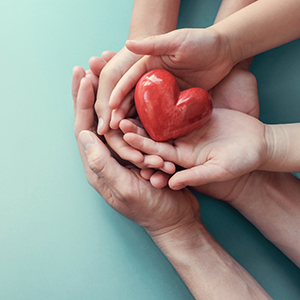living beyond, above, through and with mental illness

There are some pretty scary statistics out there. One in five Australians experiences a mental health disorder. According to the World Health Organization, mental health is ‘a state of well-being in which every individual realises his or her own potential, can cope with the normal stresses of life, can work productively and fruitfully, and is able to make a contribution to her or his community.’ Mental illness such as depression, anxiety, schizophrenia and bipolar disorder can severely affect the ability to engage fully in life’s adventures.
The most recent ABS National Health Survey estimated that in 2017-18 there were 4.8 million Australians (20.1 per cent) with a mental or behavioural condition. While this is the most recent available data for mental health prevalence in Australia, it only provides data on people who currently identify as having mental or behavioural conditions, and does not provide data on lifetime prevalence or incidence of mental illness in the past year.1Lauren Cook, Mental Health in Australia: A Quick Guide, Parliament of Australia, 14 February 2019.
The effect of mental illness can be severe on the individuals and families concerned, and its influence is far-reaching for society as a whole. Mental illness does not discriminate by age, sex or gender, although there are certain cohorts where the prevalence of mental illness is higher (members of the LGBTQI community, eighteen to twenty-four year olds). The chances are that you or someone you know and love is struggling with a mental health condition. What is really worrying is that 54% of people with mental illness in Australia do not access any treatment. This is worsened by delayed treatment due to serious problems in detection and accurate diagnosis.2Black Dog Institute, Facts and Figures about Mental Health,
One of the profound insights that is emerging beyond some pretty tough stories is that there is always more than the bleakness of the current situation. There is always the stance that does not accept that the current situation is helpless and hopeless. This is acutely so with mental illness, for the primary care model within which practitioners work with those experiencing mental illness is one of hope. At the core of any mental health intervention is the recognition that the drive to create or find meaning and purpose in one’s life experiences is universal. From this, the intention in any encounter with a person suffering from a mental illness is to find meaning and purpose in the life experience of that individual.
One of the primary models with which health professionals work with people experiencing mental illness is the Collaborative Recovery Model. The key elements of this model are profound:
- The person is the expert of their own recovery. How life-giving this is and yet it seems impossible that it was ever understood in any other way! Giving the power to enter into meaningful treatment and life enhancement back to the person with the mental health condition immediately enables the individual to feel that they matter and will motivate them to engage with any healing process. Part of the understanding here is that the individual will take responsibility for their life and wellbeing. It is about engaging in the process of taking charge of recovery, and owning your own health and wellbeing.
- The focus is on living a meaningful life rather than just to increase functioning. It is about instilling hope in a person’s life so that it becomes significant. It is about reframing problems so that they become challenges and opportunities, about pursuing meaningful goals, about imagining how it would feel to be successfully striving towards these goals, about enjoying the process of striving of discovery.3Synder C.R., Handbook of Hope, San Diego, CA: Academic Press, 2000.
- The re-creation of sense of self – moving away from illness-saturated identity. The person is not the illness. Indeed the illness may be but one part of a person’s identity. The roles of being father, wife, daughter, lover, artist, mechanic, teacher, gardener, farmer may all comprise arts of the primary identity of a person with a mental health condition. Re-defining one’s identity or discovery of a new sense of self is informed by all of life experiences rather than just an experience of illness.
- True social inclusion. For this to happen, it is acknowledged that, in addition to the important role in supporting their loved ones recovery journey, carers, families and support people often have their own recovery journey to make.
- The recovery journey is self-directed, self-determined, unique and non-linear. The journey will be one of a unique experience where a person may undertake a journey of self-healing, discovery and recreation of one’s own identity.
- Hope is present. Healing comes through finding and maintaining that hope. Hope can both be the initial catalyst for and the continued maintenance of recovery. A belief that one can heal, find hope for the future, receive hope from others and find sources of inspiration that promote hope all lead to life beyond the initial diagnosis.
- Personal power, self-agency, autonomy, self-advocacy and personal responsibility are assumed, honoured and facilitated.4Oades, L. G., Deane, F. P., & Crowe, T. P. ‘Collaborative recovery model: From mental health recovery to wellbeing’. In M. Slade, L. Oades, & A. Jarden (Eds.), Wellbeing, recovery and mental health, Cambridge University Press, 2017, pp 99-110. The treatment of mental illness has come so far from the horrific Victorian-era days when people were locked in institutions without proper care!
What a great model through which to engender hope. This is not just rhetoric – this model is being used each and every day within our healthcare networks. Truly.
… Read more about this topic in Handbook of Hope: Emerging Stories Beyond a Disintegrating World by Cath Connelly, available here.